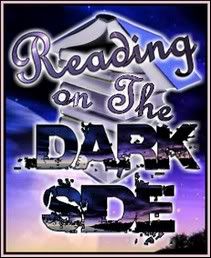 Litha has often been a source of contention among modern Pagan and Wiccan groups, because there's always been a question about whether or not Midsummer was truly celebrated by the ancients. Litha is a time at which there is a battle between light and dark. The Oak King is seen as the ruler of the year between winter solstice and summer solstice, and the Holly King from summer to winter. At each solstice they battle for power, and while the Oak King may be in charge of things at the beginning of June, by the end of Midsummer he is defeated by the Holly King.
Litha has often been a source of contention among modern Pagan and Wiccan groups, because there's always been a question about whether or not Midsummer was truly celebrated by the ancients. Litha is a time at which there is a battle between light and dark. The Oak King is seen as the ruler of the year between winter solstice and summer solstice, and the Holly King from summer to winter. At each solstice they battle for power, and while the Oak King may be in charge of things at the beginning of June, by the end of Midsummer he is defeated by the Holly King.This is a time of year of brightness and warmth. Crops are growing in their fields with the heat of the sun, but may require water to keep them alive. The power of the sun at Midsummer is at its most potent, and the earth is fertile with the bounty of growing life. Litha is a great time to celebrate outdoors if you have children. Take them swimming or just turn on the sprinkler to run through, and then have a bonfire or barbeque at the end of the day. Let them stay up late to say goodnight to the sun, and celebrate nightfall with sparklers, storytelling, and music. This is also an ideal Sabbat to do some love magic or celebrate a handfasting, since June is the month of marriages and family.
For contemporary Pagans, this is a day of inner power and brightness. Find yourself a quiet spot and meditate on the darkness and the light both in the world and in your personal life. Celebrate the turning of the Wheel of the Year with fire and water, night and day, and other symbols of the opposition of light and dark. Litha is a time to find a balance between fire and water. Midsummer is celebrated with hilltop bonfires and that it was a time to honor the space between earth and the heavens.
The Romans, who had a festival for anything and everything, celebrated this time as sacred to Juno, the wife of Jupiter and goddess of women and childbirth. She is also called Juno Lunaand blesses women with the privilege of menstruation. The month of June was named for her, and because Juno was the patroness of marriage, her month remains an ever-popular time for weddings. This time of year was also sacred to Vesta, goddess of the hearth. The matrons of Rome entered her temple on Midsummer and made offerings of salted meal for eight days, in hopes that she would confer her blessings upon their homes.
When they arrived in the British Isles, the Saxon invaders brought with them the tradition of calling the month of June Aerra Litha. They marked Midsummer with huge bonfires that celebrated the power of the sun over darkness. For people in Scandinavian countries and in the farther reaches of the Northern hemisphere, Midsummer was very important. The nearly endless hours of light in June are a happy contrast to the constant darkness found six months later in the middle of winter.
 Litha is a time of celebrating the sun, and spending as much time as you can outdoors. Try to set up your Midsummer altar outside if at all possible. If you can't, that's okay -- but try to find a spot near a window where the sun will shine in and brighten your altar setup with its rays.Set Up Your Litha Altar. Litha falls in the middle of summer, right before things start to get unbearably hot in most parts of the world, so it’s a perfect time to celebrate by having friends and family over for a cookout. Why not take advantage of this get-together and turn it into a fun celebration of the summer solstice? After all, if summer is about having fun with the people you love, a Litha backyard barbecue is the perfect way to mark the season! Hold a Backyard Barbecue Ritual.
Litha is a time of celebrating the sun, and spending as much time as you can outdoors. Try to set up your Midsummer altar outside if at all possible. If you can't, that's okay -- but try to find a spot near a window where the sun will shine in and brighten your altar setup with its rays.Set Up Your Litha Altar. Litha falls in the middle of summer, right before things start to get unbearably hot in most parts of the world, so it’s a perfect time to celebrate by having friends and family over for a cookout. Why not take advantage of this get-together and turn it into a fun celebration of the summer solstice? After all, if summer is about having fun with the people you love, a Litha backyard barbecue is the perfect way to mark the season! Hold a Backyard Barbecue Ritual.Midsummer is the time of the summer solstice, the Litha sabbat, and it’s the longest day of the year. Falling around June 21 in the northern hemisphere, and around December 21 below the equator, this is a time to celebrate the warmth and power of the sun. It’s a great time of year to get outside, enjoy the extra hours of daylight, and celebrate the season with family and friends. You can do this ritual as a group or adapt it to perform as a solitary practitioner. Hold a Sun Ritual for Midsummer. Although this particular Midsummer ritual isn't ancient, it is inspired by the traditions and legends of the Celts of the British Isles. Take advantage of the long hours of daylight to celebrate Litha, or Alban Heruin, and honor the solstice outdoors under the skies. If you're interested in Celtic lore, or wish to honor the Triple Goddess, this might be the perfect ritual for you. Midsummer Night's Fire Ritual.






No comments:
Post a Comment